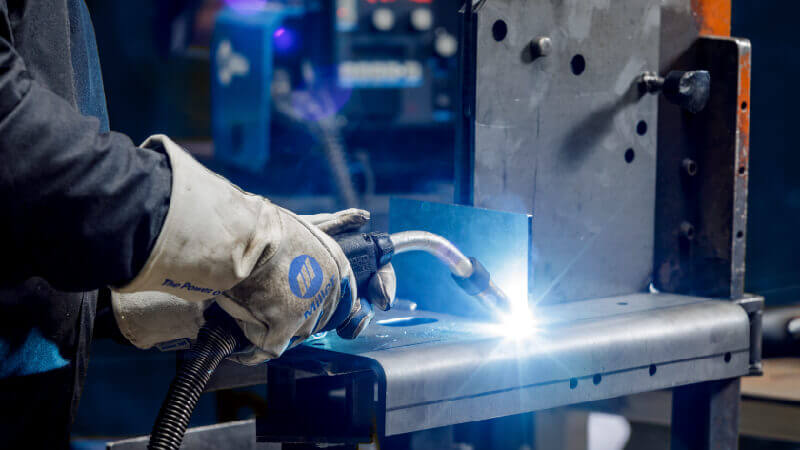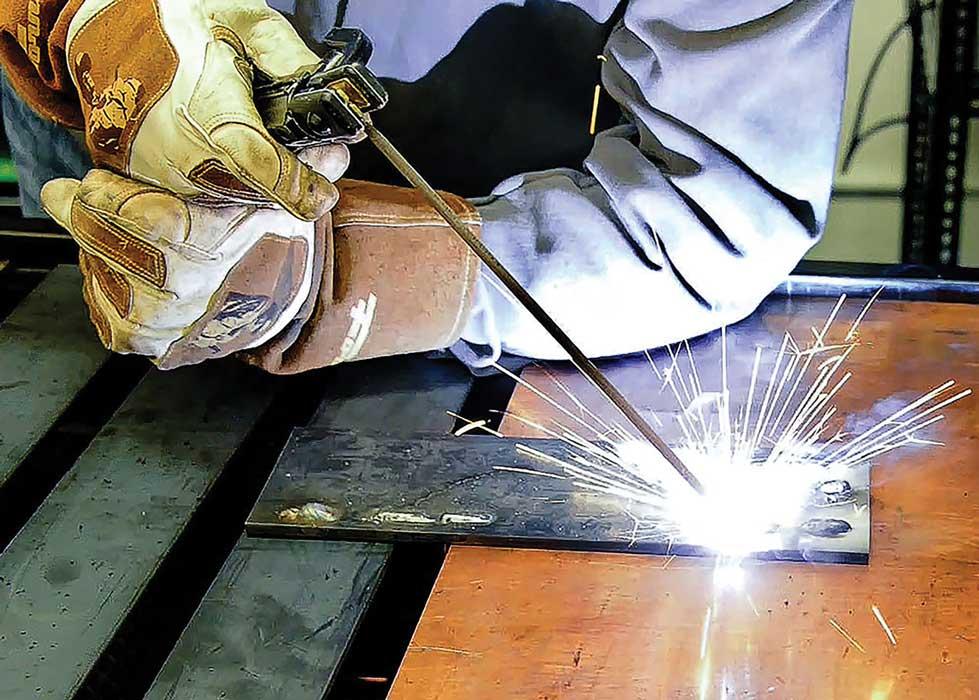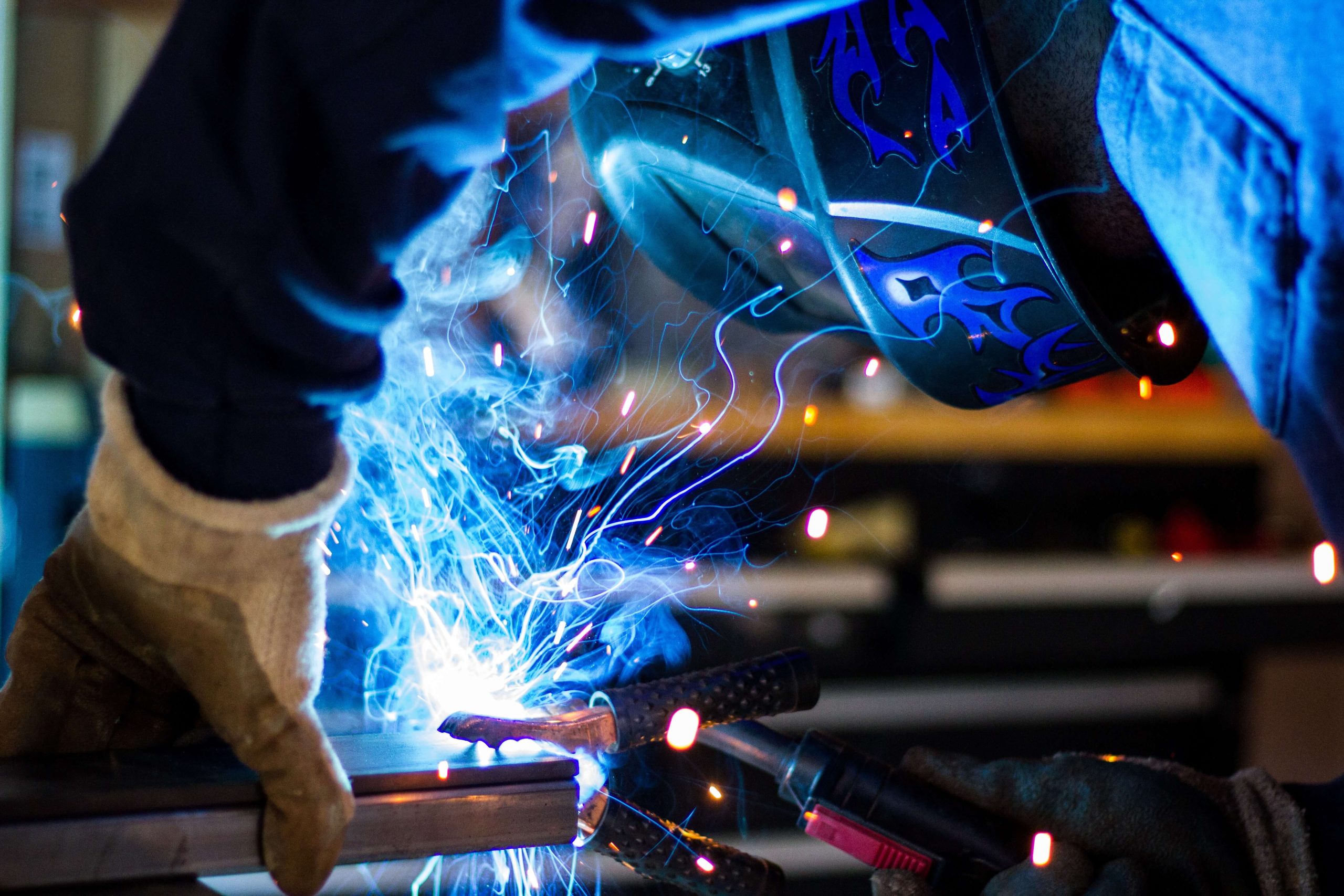Common Welding Repair Service Issues and Just How to Address Them Effectively
Welding repairs often run into a series of concerns that can endanger the honesty of the end product. Usual problems include insufficient infiltration, porosity, and imbalance, amongst others. Each issue offers special difficulties that require particular techniques for resolution. Comprehending these concerns is necessary for welders aiming to improve their end results and skills. This discussion will certainly explore these common welding repair work concerns and effective approaches to resolve them.
Inadequate Infiltration
Poor penetration takes place when the weld metal falls short to fully fuse with the base material, leading to weak joints and possible architectural failings. This issue commonly comes from inadequate warm input, incorrect electrode angle, or inappropriate welding speed. Welders might come across inadequate penetration as a result of a mistake of the necessary criteria for a details material density or type. Additionally, contamination on the base material's surface area can hinder efficient bonding, exacerbating the trouble. To resolve inadequate infiltration, welders should assure suitable settings on their equipment and preserve a clean work surface. Regular evaluation of welds is recommended to determine any type of deficiencies early, allowing for timely improvements and the prevention of jeopardized structural stability in welded assemblies.
Porosity
Porosity is a common flaw in bonded joints that materializes as small gas bubbles trapped within the weld steel. This issue can compromise the integrity of the weld, causing lowered strength and possible failing under tension. Belgrade Welding. Porosity usually develops from contamination, wetness, or improper welding methods, which allow gases to leave into the liquified weld swimming pool. To resolve porosity, welders must assure correct surface area preparation, preserve a tidy working atmosphere, and use suitable welding specifications. Additionally, picking the ideal filler material and shielding gas can alleviate gas entrapment. Regular inspection and testing of welds can aid recognize porosity early, ensuring timely corrective actions are taken, thus protecting the quality and dependability of the welded structure
Misalignment
Imbalance in welding can emerge from various aspects, including improper setup and thermal expansion. Recognizing the source is important for efficient resolution. A number of correction methods are available to straighten elements and assure architectural honesty.
Sources of Imbalance
Welding misalignment typically comes from a range of underlying problems that can endanger structural stability. One primary reason is incorrect fit-up of elements before welding, which can lead to spaces and unequal surfaces. Variants in thermal development throughout the welding process can likewise result in distortion, specifically if the materials being signed up with have different coefficients of expansion. In addition, inadequate fixturing and securing might fall short to hold components firmly in position, resulting in motion throughout welding. Inadequately kept tools, including welding machines and devices, may present disparities in the weld bead, more contributing to imbalance. Operator mistake, stemming from insufficient training or experience, can additionally play a substantial duty in creating misaligned welds.

Adjustment Techniques Readily Available
Dealing with misalignment successfully needs a combination of restorative strategies tailored to the certain problems handy. One common approach is the use of jigs or components to hold components in the proper setting throughout welding, making certain constant positioning. Furthermore, preheating the materials can help in reducing distortion and boost fit-up. For considerable imbalance, mechanical adjustment methods, such as making use of hydraulic jacks or clamps, can be utilized to remedy the placement before welding. Post-weld heat treatment may likewise be required to relieve stress and anxieties brought on by misalignment. Mindful inspection and modification during the configuration phase can protect against misalignment problems from coming to be substantial problems, promoting a smoother welding process and boosting overall structural integrity.
Distortion
Distortion is a common difficulty in welding that can develop from numerous aspects, including uneven heating & cooling. Understanding the sources of distortion is necessary for executing effective prevention techniques. Addressing this problem not just boosts architectural integrity but additionally enhances the total high quality of the weld.
Sources of Distortion
When subjected to the extreme heat of welding, products often go through adjustments that can lead to distortion. This phenomenon mainly develops from thermal expansion and tightening throughout the welding process. As the weld area warms up, the material expands; upon cooling, it acquires, which can create interior stresses. In enhancement, uneven home heating across a workpiece can exacerbate these stresses, resulting in bending or bending. The kind of product likewise plays a considerable duty; metals with varying thermal conductivity and coefficients of development might respond in different ways, causing unforeseeable distortions. Inadequate joint design and poor fixturing can contribute to misalignment throughout welding, boosting the probability of distortion. Recognizing these causes is vital for effective welding repair work and avoidance strategies.
Prevention Techniques
Reliable prevention methods for distortion during welding concentrate on controlling heat input and ensuring proper joint layout. Maintaining a regular warmth input assists to decrease thermal development and tightening, which can bring about distortion. Utilizing methods such as pre-heating the work surface can also minimize the temperature gradient, promoting uniform heating. In addition, selecting ideal joint layouts, such as T-joints or lap joints, can boost security and decrease stress focus. Executing appropriate fixturing to safeguard the work surfaces in position further aids in maintaining alignment throughout the welding procedure. Staggered welding sequences can distribute warmth a lot more evenly, protecting against localized distortion. By using these strategies, welders can greatly lower the possibility of distortion and enhance the total high quality of their welds.
Cracking
Fracturing is an usual problem encountered in welding repairs, commonly arising from different variables such as inappropriate air conditioning rates, material selection, or poor joint prep work. The incident of cracks can significantly jeopardize the integrity of the weld, bring about prospective failures throughout procedure. To address this problem, welders need to first examine the root creates, ensuring that materials are suitable and properly selected for the certain application. Furthermore, managing the cooling rate throughout the welding procedure is necessary; quick air conditioning can induce tension and cause fracturing. Proper joint design and prep work likewise add to reducing the risk. Executing these strategies can improve weld high quality and durability, inevitably minimizing the chance of cracking in completed weldments.

Incomplete Blend
A substantial problem in welding fixings is incomplete blend, which takes place when the weld metal does not properly bond with the base product or previous weld passes - Montana Mobile Welding and Repair Welding. This defect can lead to weak points in the joint, potentially endangering the honesty of the bonded structure. Aspects adding to insufficient fusion consist of inadequate warm input, improper welding strategy, and contamination of the surfaces being signed up with. To resolve this issue properly, welders should guarantee appropriate pre-weld cleaning and surface area preparation, along with adjust their welding click to find out more criteria to achieve ample penetration and fusion. Routine inspection throughout the welding procedure can also help identify insufficient blend early, enabling timely restorative steps to boost the overall high quality of the weld
Overheating
While welding repairs can improve structural honesty, overheating presents a considerable challenge that can bring about material degradation. Extreme warmth throughout welding can modify the mechanical properties of steels, leading to decreased toughness, raised brittleness, and bending. This sensation is particularly essential in high-stress applications where structural integrity is vital. Determining getting too hot can entail visual examinations for discoloration More hints or distortion, as well as checking temperature level during the welding procedure. To reduce the dangers linked with getting too hot, welders should utilize ideal strategies, such as controlling warm input, adjusting travel speed, and utilizing ideal filler materials. Additionally, carrying out pre- and post-weld heat therapies can help recover product homes and enhance the total high quality of the repair service, making certain long-term efficiency and security.
Frequently Asked Inquiries
What Are the Usual Signs of a Welding Defect?

Just How Can I Evaluate My Welds for Quality?
To test welds for quality, one can make use of visual evaluations, ultrasonic testing, and radiographic techniques. Each strategy ensures structural honesty, determines defects, and verifies adherence to specified standards, ultimately enhancing the reliability of the bonded joints.
What Safety Precautions Should I Take While Welding?
When welding, one need to focus on safety by wearing ideal individual protective equipment, ensuring proper air flow, securing flammable materials away, keeping a tidy work area, and recognizing surroundings to prevent mishaps and injuries.
Can I Repair a Weld Without Remodeling the Entire Joint?
Fixing a weld without renovating the whole joint is possible, relying on the damages (Belgrade Fabrication). Methods such as grinding, including filler product, or utilizing a welding procedure can effectively attend to specific flaws while maintaining the bordering structure
What Equipment Are Important for Effective Welding Repair Works?
Vital tools for reliable welding fixings include a welding device, wire brush, mill, article source protective equipment, clamps, and filler products. Each tool plays a vital function in guaranteeing top quality and safety and security during the repair work procedure. Porosity typically develops from contamination, dampness, or incorrect welding strategies, which allow gases to escape into the molten weld swimming pool. Inadequately conserved devices, consisting of welding devices and tools, may present variances in the weld grain, more adding to misalignment. When subjected to the intense warm of welding, materials often go through changes that can lead to distortion. Fracturing is an usual issue encountered in welding repairs, often resulting from numerous factors such as incorrect cooling rates, material choice, or inadequate joint preparation. A substantial problem in welding repairs is incomplete combination, which takes place when the weld steel does not sufficiently bond with the base material or previous weld passes.